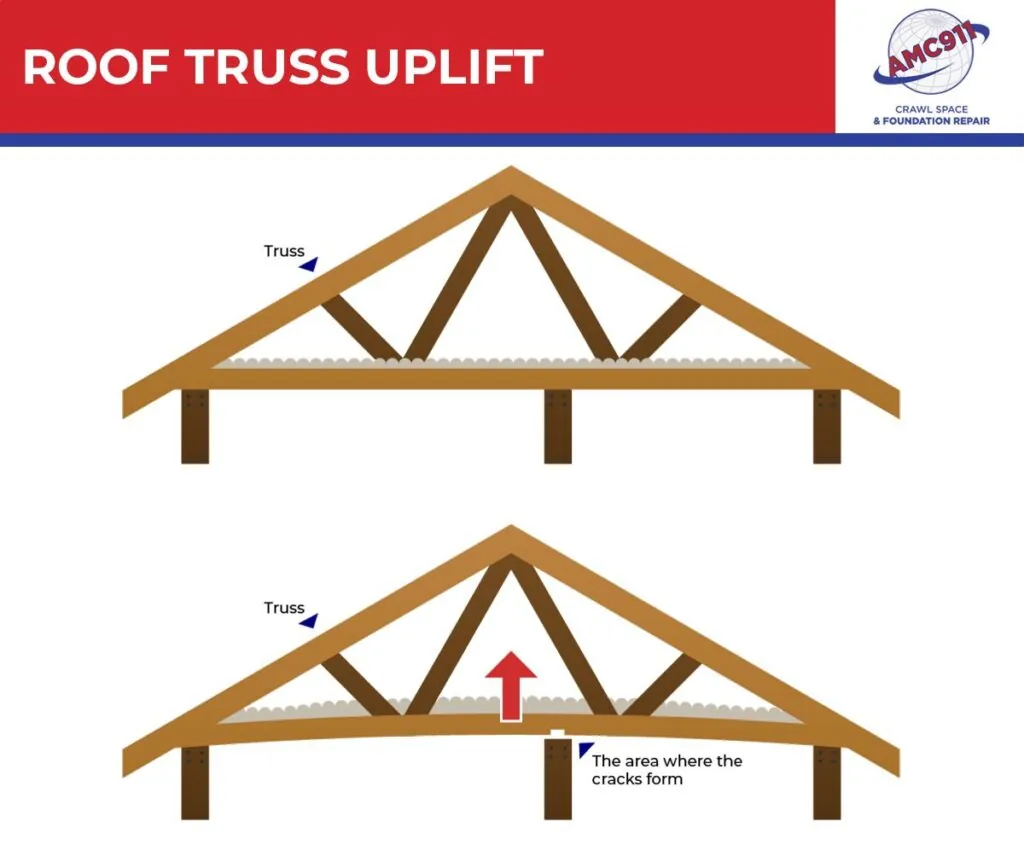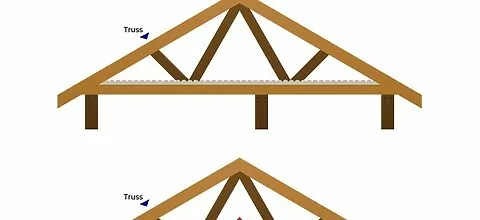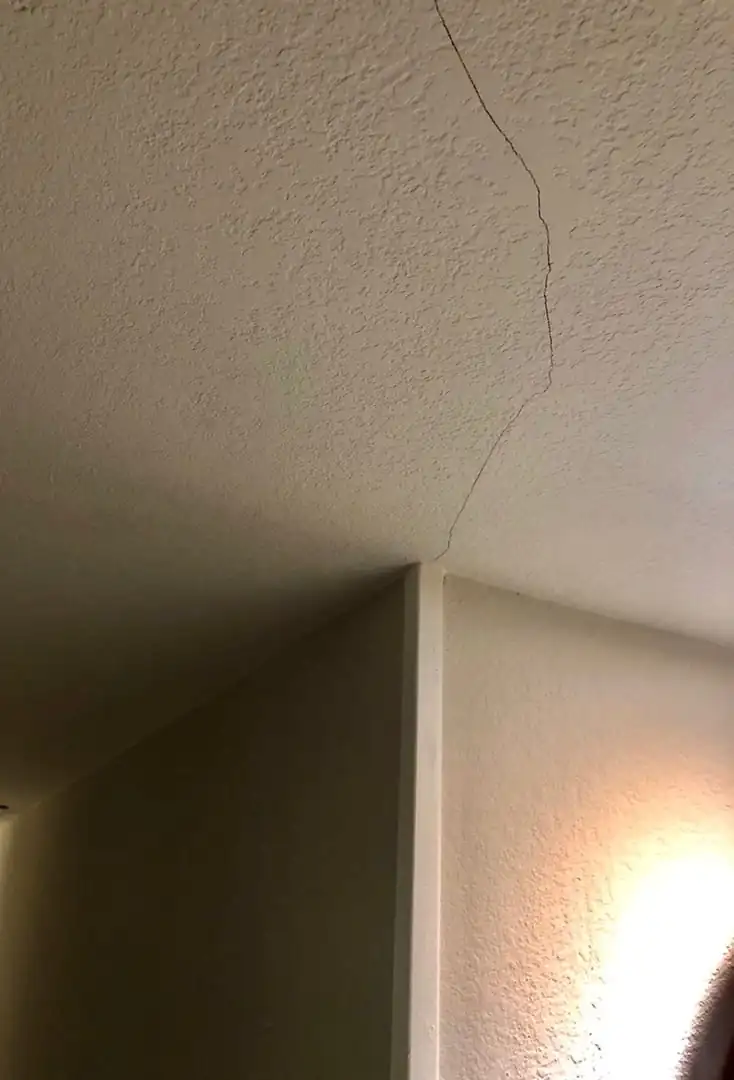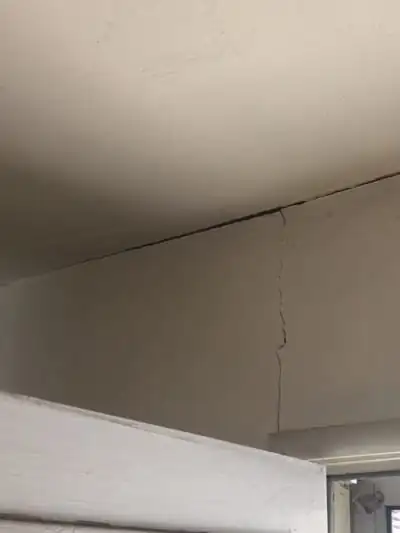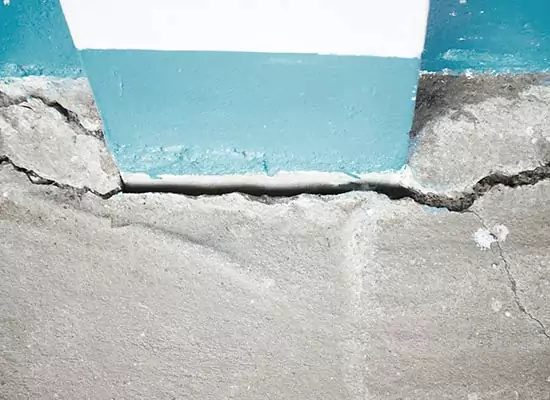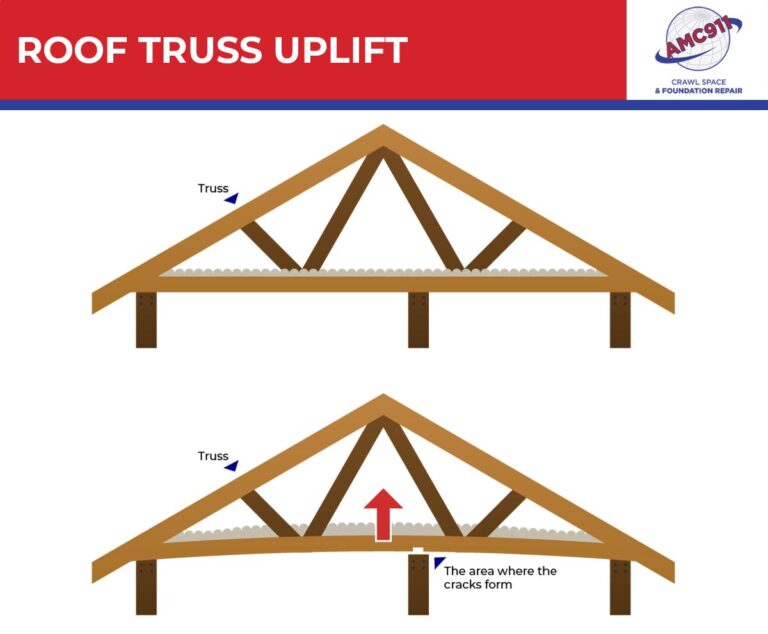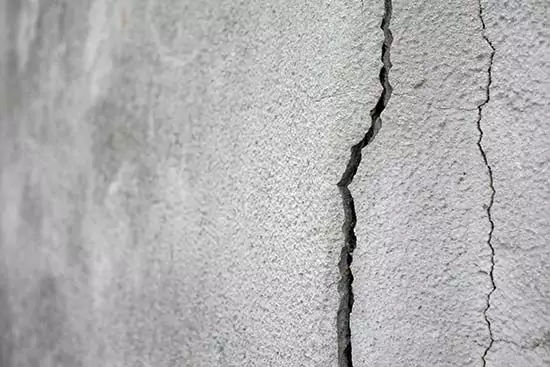Cracks where the wall meets the ceiling are often caused by something called “truss uplift,” which we’ll explain in this article. However, there are other causes, and we’ll talk about those as well. The thing to remember is that cracks aren’t unusual, and they’re more common in older homes. However, not all cracks are alike. Some are more serious than others.
In this article, we’ll go over why ceilings crack, why you might have cracks where the wall meets the ceiling, which ceiling cracks are serious, and more.
Why Do Ceilings Crack?
Ceilings crack for various reasons, including:
Hairline ceiling cracks caused by paint build-up
These cracks might look like spiderwebs or an alligator’s skin. Ceiling cracks caused by paint build-up are ugly but harmless.
Improper drywall installation
Connecting two pieces of drywall requires drywall mud and drywall tape. Either too much or too little drywall mud could cause cracking later. Ceiling cracks caused by improper drywall installation are usually straight because they follow the drywall tape. Like ceiling cracks caused by paint build-up, cracks caused by improper drywall installation are not a structural issue. They just look unattractive.
Temperature fluctuations that cause plaster to expand and shrink
These cracks are also merely ugly and don’t threaten your home’s structural integrity.
The above ceiling cracks are definitely unattractive. While you might not like how they look, they aren’t a sign of foundation trouble that could affect your home’s structural integrity. More serious ceiling cracks include:
Ceiling cracks accompanied by sagging
The ceiling joists could be too far apart or too small. Was a load-bearing wall removed at some point? Is there something heavy on the floor above the ceiling? Any large ceiling crack accompanied by sagging must be looked at by either a foundation repair contractor or a structural engineer immediately. If you suspect the ceiling is in danger of collapsing, leave the house immediately.
Discolored ceiling cracks
These almost always indicate a water leak somewhere. Are the cracks damp as well? Is there a bathroom on the floor above the discolored cracks? Could they have been caused by a leaking roof?
Differential settlement (see below graphic)
Differential settlement happens when the foundation settles into the ground unevenly. This puts stress on the building’s frame and can cause wall cracks.
Natural disasters like earthquakes and sinkholes
This one probably needs no explanation.
Soil creep
If your home is on a hillside, it may be experiencing something called soil creep. This is when soil at the top of a hill gradually makes its way down the hill. This movement in the ground can cause ceiling cracks.
Cracks Where the Wall Meets the Ceiling
Usually, cracks where the wall meets the ceiling are caused by truss uplift. This happens because wooden roof trusses move due to seasonal changes in temperature and humidity. This can cause cracks in drywall that open and close with the seasons.
If cracks where the wall meets the ceiling are caused by truss uplift, it is not a structural problem. However, that doesn’t mean you should ignore it. Contact a foundation repair contractor for an inspection and advice on how to proceed.
Are All Ceiling Cracks Serious?
No, some ceiling cracks are just ugly. For example, hairline cracks are caused by paint build-up. We say that these harmless ceiling cracks are “non-structural” because they aren’t caused by something that affects your home’s structural integrity. While you might think they’re ugly, you shouldn’t lose any sleep over them. However, some ceiling cracks are serious because they affect the home’s structural integrity.
Signs a ceiling crack is serious include:
- Ceiling cracks accompanied by sagging
- Diagonal ceiling cracks – These indicate the drywall is being torn apart. Since this isn’t easy to do, it means something serious is going on with the foundation.
- A ceiling crack that goes across the ceiling and down a wall
- A series of small ceiling cracks, all of which are wider than 1/16 inch.
If you see any ceiling cracks, look around to see if there are other signs of foundation problem. These include:
- Doors and windows that don’t open and close properly
- Uneven floors
- Wall cracks
- Floor cracks – A crack limited to one or two tiles was probably caused when something heavy fell on the floor. However, a crack running wall to wall across the floor is a sign of foundation trouble.
- Stair step cracks in brickwork or masonry
- Moldings that have separated from the wall or ceiling
- Diagonal wall cracks from the corners of windows and doors
- Torn wallpaper – This might indicate the wall behind the wallpaper is cracked.
- Ceilings and floors that have separated from the wall
If you see any of the above, contact a foundation repair contractor or a structural engineer right away and request an inspection. The foundation repair contractor will also be able to give you a repair estimate.
For more information see Ceiling Cracks When To Worry.
Are Cracks Where the Wall Meets the Ceiling Serious?
If the cracks where the wall meets the ceiling are caused by truss uplift, it’s not serious. However, you shouldn’t ignore the problem. If you repair the cracks yourself, they will just open again when the temperature and humidity change. So, they should be inspected by a foundation repair professional.
If you have suspicious ceiling cracks in your home and you’re in our service area – Hampton Roads and the surrounding areas in Virginia – contact us today for an inspection and repair estimate.

